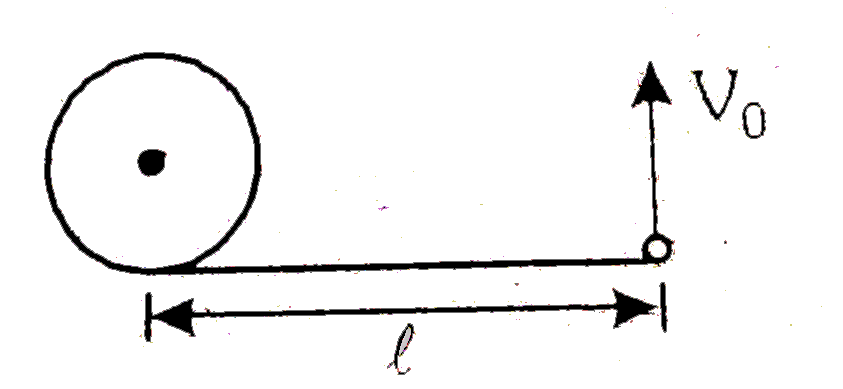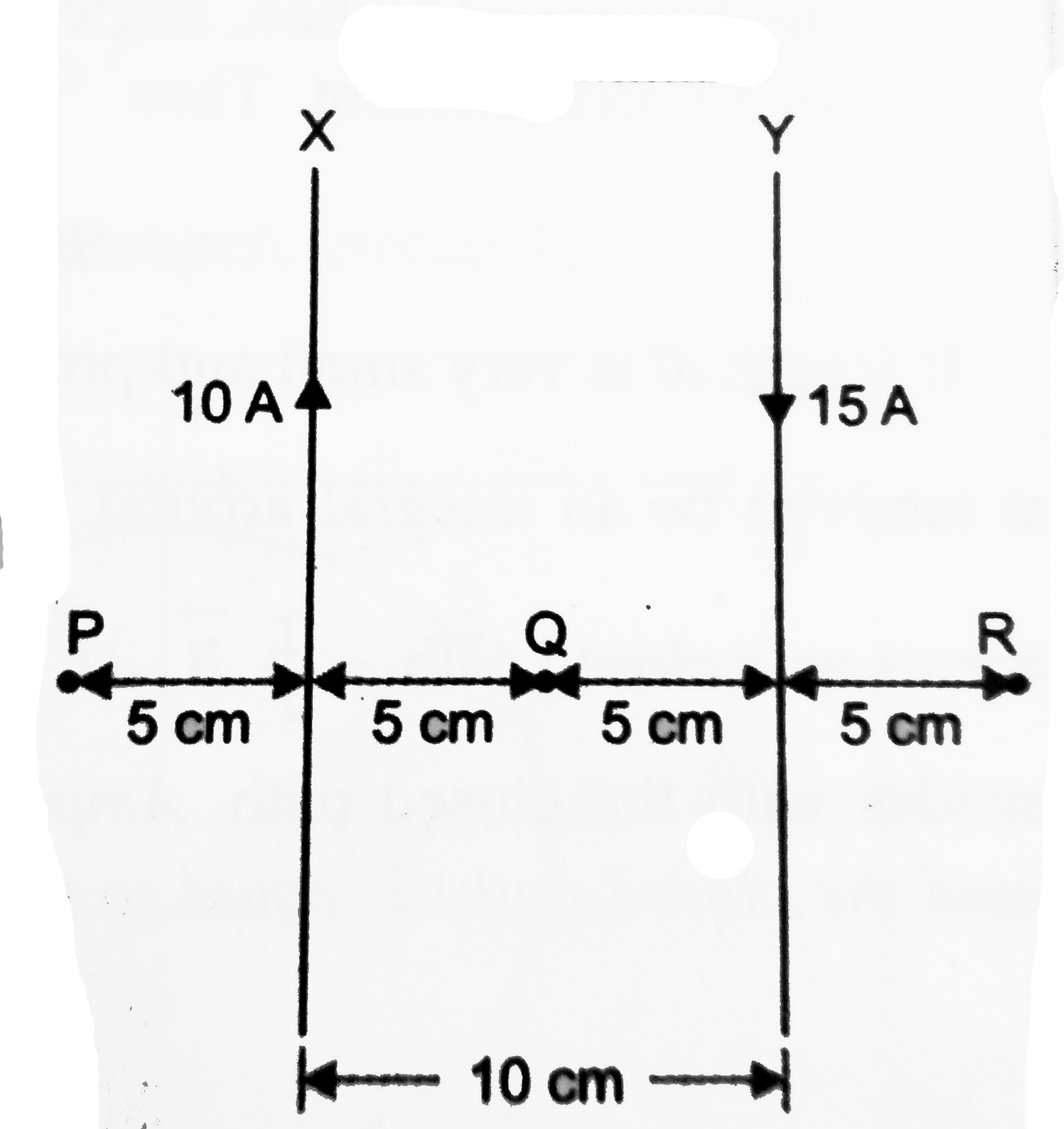Two identical conductors P and Q are placed on two friction less rails R and S in a uniform magnetic field directed into the plane. If P is moved in the direction shown in figure with a constant speed, then rod Q
 Solution in Gujrati
Solution in Gujrati
Will be attracted towards 'P'
Will be repelled away from 'P'
Will remain staionary
May be repelled (or) attracted towards 'P'
The correct Answer is:A
From Lenz law, if one rod is moved away from the second rod then seconds rod will be attracted towards first due to motion of 'p' area under rectangle and hence flux increase. To oppose this area of rectangle should decrease. So 'Q' moves towards P
Topper's Solved these Questions
- TEST PAPERSBOOK - ALLEN CHAPTER - TEST PAPERSEXERCISE - PHYSICS
16 Videos
- TEST PAPERSBOOK - ALLEN CHAPTER - TEST PAPERSEXERCISE - MATHS
1 Videos
- TEST PAPERSBOOK - ALLEN CHAPTER - TEST PAPERSEXERCISE - part-2 physics
73 Videos
- TEST PAPER 4BOOK - ALLEN CHAPTER - TEST PAPER 4EXERCISE - PHYSICS
45 Videos
- UNIT & DIMENSIONS, BASIC MATHS AND VECTOR BOOK - ALLEN CHAPTER - UNIT & DIMENSIONS, BASIC MATHS AND VECTOR EXERCISE - Exercise (J-A)
7 Videos
Similar Questions
A block of mass m is hanging from a light string of length l . A bullet of mass m strikes the hanging mass and gets embedded into it. The value of v such that tension in string and the speed of combined mass becomes zero simultaneously during the subsequent motion , is :-

View SolutionIf complex number z(z≠2) satisfies the equation z2=4z+|z|2+16|z|3, then what is the value of |z|4 ?
View SolutionA bead is connected with a fixed disc of radius R by an inextensible massless string in a smooth horizontal plane. If the bead is pushed with a velocity v0 prependicular to the string, the bead moves in a curve and consequently collapses on the disc. Then

View SolutionTwo forces, each of magnitude F have a resultant of the same magnitude F. The angle between the two forces is
View SolutionMatch List I with List II and select the correct answer using the codes given below the lists :

View SolutionA conducting rod of length is moved at constant velocity v0 on two parallel, conducting, smooth, fixed rails, that are placed in a uniform constant magnetic field B perpendicular to the plane for the rails as shown in Fig. A resistance R is connected between the two ends of the rails.
Then which of the following is/are correct:

View SolutionAB is a current-carrying conductor in the plane of the paper as shown in figure. What are the directions of magnetic fields produced by it at point P and Q? Given r_1gtr_2 , where will the strength of the magnetic field be larger?
View SolutionThere are two parallel current carrying wires X and Y as shown in figure. Find the magnitude and direction of the magnetic field at points, P, Q and R.

View SolutionTwo idential conductors P and Q are placed on two frictionless rails R and S in a uniform magnetic field directed into the plane. If P is moved in the direction shown in figure with a constant speed, then rod Q

View SolutionFigure shows a wire sliding on two parallel, conducting rails placed at a separation L . A magnetic field B exists in a direction perpendicular to the plane of the rails. What force is necessary to keep the wire moving at a constant velocity V ?

View SolutionTwo particles P and Q are moving as shown in the figure. At this moment of time the angular speed of P w.r.t. Q is

View SolutionA rod AB of mass m and length l is placed on two smooth rails P and Q in a uniform magnetic induction B as shown in figure-4.110. The rails are connected to a current source supplying a constant current J. Find the speed attained by rod AB when it leaves off the other end ofrails oflength L.
View Solutionचित्र में दो धारावाही समांतर तार 1 व 2 दिखाए गए हैं। बिंदुओं P,Q तथा R पर चुंबकीय क्षेत्र के मान तथा दिशा ज्ञात कीजिये।

View Solutionदो समरूप छड़ चुंबक P और Q चित्र में दिखाए अनुसार एकसमान चुंबकीय क्षेत्र में रखे गए हैं। इनमें से कौन-सा स्थायी संतुलन में है ? अपने उत्तर का कारण दीजिए।

View SolutionTwo identical point charges'of magnitude -q are fixed as shown in the figure below. A third charge +q is placed midway between the two charges at the point P. Suppose this charge is displaced a small distance from the point P in the directions indicated by the arrows, in which direction(s) will +q be stable with respect to the displacement?

View SolutionTwo identical point charges'of magnitude -q are fixed as shown in the figure below. A third charge +q is placed midway between the two charges at the point P. Suppose this charge is displaced a small distance from the point P in the directions indicated by the arrows, in which direction(s) will +q be stable with respect to the displacement?

View Solution
